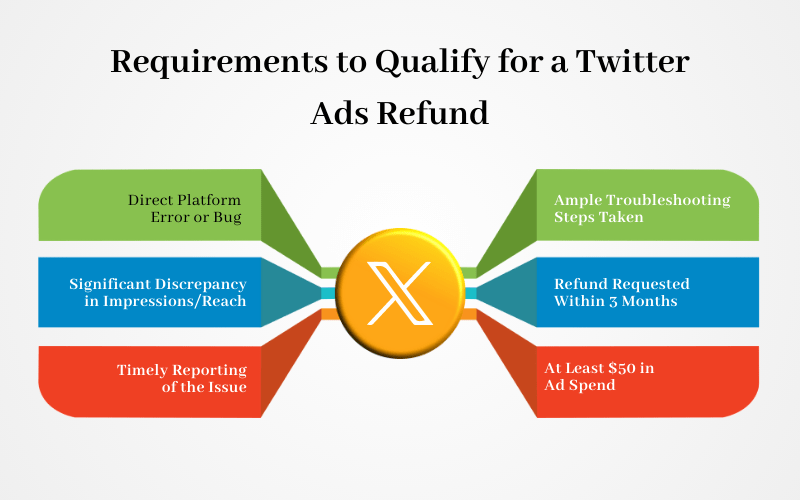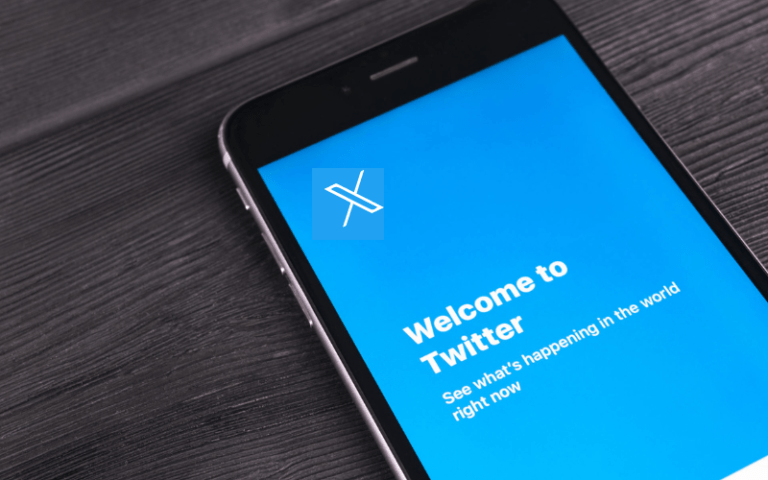Twitter Ads can be a powerful marketing channel for businesses looking to reach new audiences and amplify their messages. However, advertising on Twitter requires a certain budget, which can be a financial risk, especially for smaller businesses with limited resources.
Things don’t always go as planned with ad campaigns. Sometimes, you may feel you’ve spent money on Twitter Ads without getting the desired results or return on investment. The good news is there are options to get a refund for Twitter Ads in certain situations.
In this comprehensive guide, we’ll explore how the Twitter Ads refund process works, the requirements to qualify for a refund, tips for making a successful appeal, and steps you can take to avoid needing a refund in the first place through optimization and risk mitigation.
Table of Contents
Overview of Twitter Ads Refund Policies
Before diving into the details of getting a Twitter Ads refund, it’s important to understand Twitter’s overall refund policies.
Generally speaking, Twitter does not offer automatic refunds on advertising spend. Their official policy states:
“All payments made to Twitter Ads are final and nonrefundable unless otherwise determined by Twitter in its sole discretion.”
So refunds are not guaranteed just because a campaign underperformed or you were unsatisfied with the results. Twitter makes decisions on a case-by-case basis, depending on the context.
However, their policy also says:
“On a case-by-case basis, refunds or account credits may be considered if there was an error by Twitter that directly caused your ads to show to significantly fewer users than intended and paid for.”
This indicates that if Twitter made an error that directly impacted your campaign delivery, you might have grounds for an appeal for a refund or account credit.
Twitter also states that if you haven’t used your advertising credit within 90 days of issuance, any remaining balance can be refunded upon request. This mainly applies to advertising credits granted through Twitter’s small business programs, not refunded ad spend.
In summary, while refunds are not typical, Twitter does leave the door open for a refund in cases of errors on their platform impacting campaign performance. The onus is on the advertiser to make a compelling case.
Later in this guide, we’ll dig into tips for constructing a strong appeal. But first, let’s explore the requirements for qualifying for a refund.
Also read: Cost of Twitter Ads
Requirements to Qualify for a Twitter Ads Refund

Since Twitter ad refunds are not guaranteed, you need to meet certain requirements to have a shot at your request being approved. Here are the key criteria to qualify:
1. Direct Platform Error or Bug
As mentioned in their policy, the most valid reason for a refund is if Twitter made a direct error that caused your ads to be shown much less than anticipated.
For example, this could be a major technical bug or glitch that disrupted ad serving, resulting in dramatically fewer impressions and reach.
Or perhaps Twitter incorrectly disapproved your ads due to a policy enforcement mistake. In cases like these, where Twitter acknowledges their error-impacted delivery, you generally have the best chance of a refund.
2. Significant Discrepancy in Impressions/Reach
It’s not enough to just be unsatisfied with your campaign results. To warrant a refund, there must be a major discrepancy between the amount you paid and the actual impressions or reach delivered due to Twitter’s error.
For instance, if you paid to reach 1 million users but only reached 100,000 due to a Twitter glitch, you’d have a case for a partial refund. Minor discrepancies are typically not grounds for a refund.
3. Timely Reporting of the Issue
If you experience an error that you believe warrants a refund, it needs to be reported to Twitter Ads support promptly to be considered. Don’t wait weeks or months after a campaign concludes to raise the issue.
4. Ample Troubleshooting Steps Taken
Twitter expects you to make a good-faith effort to troubleshoot issues before requesting a refund. For example, pausing poorly performing ads, adjusting targeting, fixing creative, etc.
Show you’ve taken reasonable optimization actions, but the problem persists due to their error.
5. Refund Requested Within 3 Months
Twitter requires refund requests to be made within 90 days of the impacted advertising spend. Anything further back is not eligible.
6. At Least $50 in Ad Spend
Refund requests must be for a minimum of $50 in advertising spend to be reviewed. Anything under this threshold is not considered.
Meeting all these requirements is essential for having a shot at getting approved. Next, we’ll explore how to craft an effective refund request.
How to Make a Compelling Twitter Ads Refund Appeal
Once you determine you have valid grounds for a refund, here are tips for creating a persuasive appeal:
Clearly Articulate the Direct Platform Error
Explain exactly what Twitter’s error was and when it occurred, e.g., a major technical glitch on July 5 that disrupted ad serving. Provide as many specific details as possible.
Include Screenshots as Evidence
Visuals are powerful. Include screenshots of error messages, campaign analytics showing decreased reach, or other documentation that clearly illustrates the impact of the platform error.
Quantify the Financial Loss with Stats
Use stats to demonstrate the size of the discrepancy between expected vs. actual performance due to the error. For example, you paid for 1 million impressions but only received 200,000.
Highlight Troubleshooting Steps Taken
Proactively communicate all the optimization actions you took to try to resolve the issue on your end before requesting a refund. This shows you made your best effort.
Be Concise But Thorough
Don’t write a novel, but ensure you include all pertinent details. Twitter reps need to understand the situation quickly but fully to decide.
Adopt a Polite Tone
Avoid getting angry or threatening. You attract more bees with honey. A constructive, amicable tone makes the rep more inclined to help you.
Focus on Facts Over Emotions
While frustrating, don’t emphasize emotions like anger or disappointment. Stick to objective facts demonstrating Twitter’s error and its impact.
Following these tips will give you the best shot at having your Twitter Ads refund request approved. Let’s look at the steps of the actual refund process.
Step-by-Step Guide to Getting a Refund on Twitter Ads
Here is a step-by-step walkthrough of how to request a refund on Twitter Ads:
Step 1: Gather Evidence and Document the Issue
Collect all the data and evidence showing the platform error and its impact on your campaign (screenshots, analytics, etc.). Quantify impressions lost and revenue impact. Have this information ready to include in your request.
Step 2: Open a Case in Ads Support
Go to the Twitter Ads Support Portal and open a new case detailing the issue and why you believe you qualify for a refund. Include your supporting documentation.
Step 3: Twitter Reviews Your Request
A Twitter Ads account management team member will review your refund request and may reach out with any additional questions. This review can take 1-2 weeks.
Step 4: Receive Refund Decision
You will receive an email notification from Twitter regarding whether your refund request was approved or denied. If approved, it will detail the amount and timeframe.
Step 5: Twitter Processes Refund
It takes around 5 business days for the refund to be processed to your original payment method if approved. Monitor that the correct refund amount is issued.
Step 6: Twitter Confirms Completion
Once fully processed, Twitter will confirm via email that the Ads refund has successfully been completed to your account.
And that’s the full life cycle of getting a refund for Twitter Ads spent. It does require patience and diligent follow-up. Next, we’ll cover tips to avoid needing a refund in the first place.
Best Practices to Avoid Needing a Twitter Ads Refund
While going through the refund process is one option if your Twitter Ads campaign flops, it’s wise to do everything possible to avoid needing a refund. Here are some best practices to minimize wasted ad spend and optimize results:
Do Extensive Audience Research
Ensure you thoroughly understand your target audience on Twitter. Tailor campaigns directly to their interests, behaviors and needs.
Perform Competitive Analysis
Study competitors and benchmarks for ideal messaging, creativity and pricing. Learn from others’ successes and mistakes.
Set Realistic Goals and Budgets
Set targets and budgets based on objective data – not estimates. Avoid overspending beyond sustainable ROI.
Focus on Quality Creative
Invest in engaging, relevant ad creative designed specifically for Twitter. Don’t recycle.
Continuously Test and Improve
Set aside a portion of the budget to test new ideas. Pause or tweak underperformers. Let data guide optimization.
Monitor Campaigns Closely
Stay on top of analytics to spot any delivery drops or issues early and troubleshoot quickly.
Utilize Available Credits and Discounts
Leverage Twitter’s various small business credit programs to stretch your budget further.
Diversify Your Media Mix
Don’t put all the eggs in one basket. Spread budget across multiple platforms to mitigate risk.
Learn Twitter’s Editorial Guidelines
Study Twitter’s ad policies in depth to ensure compliance. Follow proper creative specifications.
Work with an Experienced Agency
Consider having an expert Twitter Ads agency manage campaigns to maximize performance.
Following best practices for maximizing Twitter Ads success can minimize the need for refunds. However, even well-planned and optimized campaigns can sometimes go awry due to Twitter errors. In those cases, strategically requesting a refund is a reasonable option.
We’ll wrap up this guide by looking at expected timeframes for the refund process and key takeaways.
Expected Timeframe for Twitter Ads Refunds
If you do submit an official refund request to Twitter Ads support, here is the typical timeframe you can expect:
- 24-48 hours for an initial response confirming receipt of your request
- 1-2 weeks for Twitter to thoroughly review your case details
- 5 business days for an approved refund amount to process after notification
- Within 90 days of original ad spend for request submission
So, expect about 3 weeks from your initial refund request to have the money credited back.
Twitter may take longer if they require extensive technical investigation or have follow-up questions for you. Be responsive to any information Twitter needs to make their evaluation.
Patience is required, but with a justified case for a refund, it can pay off in recouping your ad spend.
Key Takeaways
Here are some top high-level takeaways on getting refunds for Twitter Ads:
- Twitter ad refunds are not guaranteed and rarely given, but they are possible in cases of direct Twitter errors significantly impacting campaign delivery.
- You must thoroughly document the platform error and resulting financial impact with ample evidence to get approval.
- Making an effective refund request requires highlighting Twitter’s mistake, troubleshooting steps taken, and financial loss through statistics and screenshots.
- Work closely with the Ads support team to provide any additional information needed for them to complete their evaluation.
- With proper audience research, campaign optimization, budgeting, and creative testing, refunds can often be avoided.
- But even well-planned campaigns can be disrupted by Twitter glitches, so refunds are an option of last resort to recover ad spending.
- The full refund process typically takes around 3 weeks from the initial request through completion.
Getting a refund for Twitter Ads requires a combination of justification, evidence, persistence, and patience. However, recouping your advertising investment is possible in limited cases where Twitter platform errors cause campaigns to fall drastically short of expectations. Follow the guidance in this guide to have the best shot at a successful appeal.
Frequently Asked Questions
Here are answers to some common questions about getting refunds for Twitter Ads:
-
What are examples of Twitter errors that could warrant a refund?
Technical bugs disrupting ad serving, policy enforcement mistakes, incorrectly disapproving ads, errors applying wrong bid strategies, etc. Significant glitches affecting delivery.
-
Can I get a refund if my campaign just didn’t perform well?
No, poor performance alone does not qualify you for a refund. Twitter expects advertisers to optimize underperforming campaigns proactively. Refunds are only given for direct Twitter errors.
-
How much of a refund can I get?
If approved, refunds are generally partial based on the extent of Twitter’s error and its impact. For example, you may get 50% back if your reach is 50% below the expected levels due to a Twitter glitch.
-
What if Twitter simply doesn’t respond to my refund request?
Follow up persistently and professionally if you don’t get a response. If they remain unresponsive, you may need to consider your options, like involving your company’s legal counsel.
-
Can I get a refund for promoted tweets that didn’t do well?
No, you are paying for the promotion, not guaranteed engagement levels. Underperforming tweets alone are not grounds for a refund.
-
Is there a minimum spend amount to be eligible?
Yes, Twitter only processes refunds for accounts that spent a minimum of $50 in Ads. Spending below this amount is not refundable.
-
How long do I have to request a refund?
You must submit refund requests within 90 days of the impacted ad spend. Anything further back is not eligible.
-
Can I get a refund if my ads are disapproved?
Only if Twitter mistakenly disapproved compliant ads on their end. General ad disapprovals are not grounds for refunds.
Getting a refund for wasted ad spend on Twitter Ads is challenging but possible in limited cases. Follow the steps in this guide to give yourself the best shot. With strategic optimization and risk management, hopefully, you can avoid needing to request a refund entirely.







